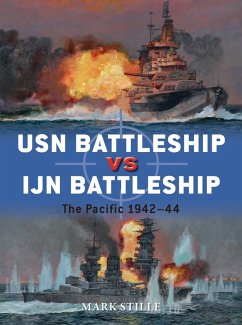In the build-up to World War II both the United States and Japan believed their battleships would play a central role in battle, but after the Pacific War began in December 1941, the role of the battleship proved to be much more limited than either side expected. There would be only two battleship vs battleship actions in the Pacific in World War II, both of which are assessed in this engaging study. At Guadalcanal in 1942, Kirishima faced two modern US battleships, USS Washington and USS South Dakota. In the Surigao Strait in 1944, two World War I-era Japanese battleships, Yamashiro and Fuso, faced six American battleships supported by four heavy cruisers in history's last-ever clash between battleships.
Employing full-colour artwork, carefully selected archive photographs, and expert analysis, former US Navy Commander Mark E. Stille examines the two head-to-head clashes between the battleships deployed by the United States and Japan in the struggle for control of the Pacific during World War II.
Employing full-colour artwork, carefully selected archive photographs, and expert analysis, former US Navy Commander Mark E. Stille examines the two head-to-head clashes between the battleships deployed by the United States and Japan in the struggle for control of the Pacific during World War II.

